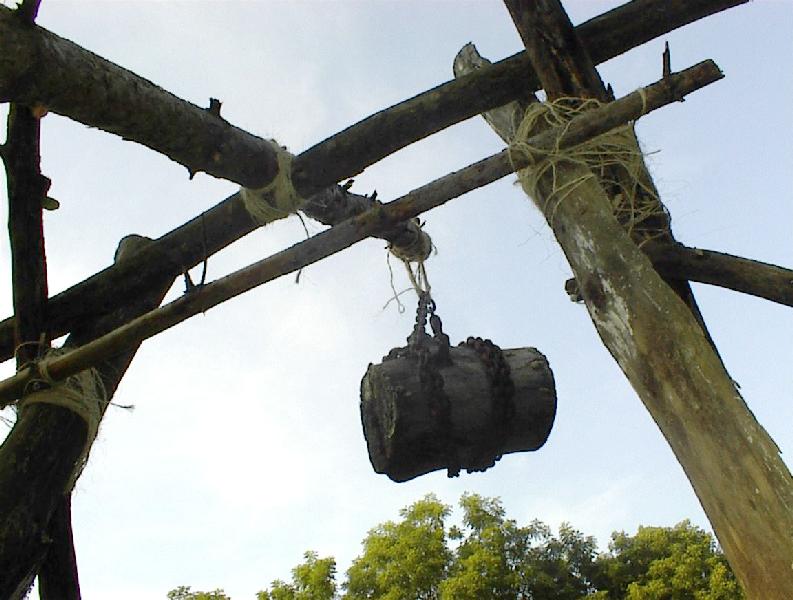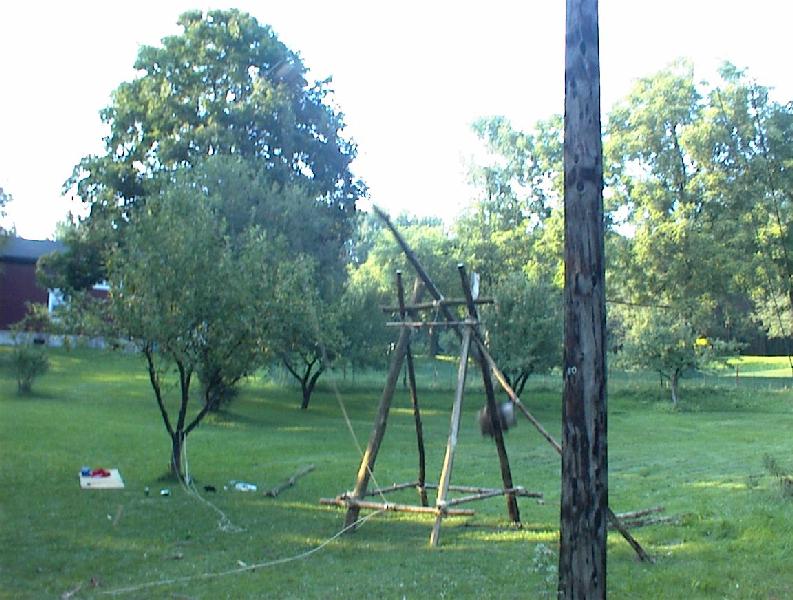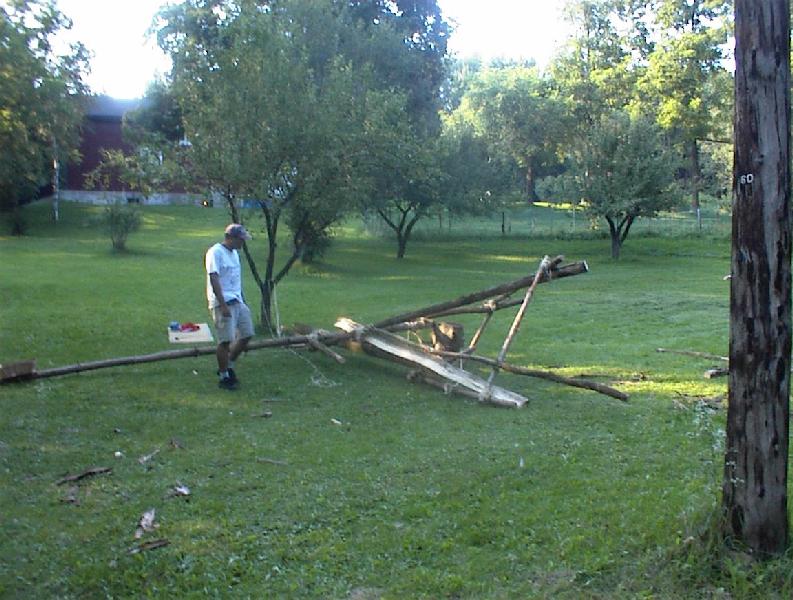On Building Your Own Trebuchet
(with a Whole lot of Twine)
Written by Rolo
With the end of summer drawing near there are a few traditions that we all partake in. For some it is simply a change of season, for others it is a return to school. We all started to watch and also feel summer wane all around us and headed to our friend's cottage for good times, relax and spend an afternoon building a trebuchet using a whole lot of twine!

For those of you who do not know what a Trebuchet is, it is simply a more advanced version of a catapult. A catapult is a large wooden mechanism that quite literally "catapults" a large object over a fairly large distance. Generally the large object is a projectile or missile of some type. I.e.: a rock, cantaloupe, or a Mini Cooper.
The basic catapult generally is comprised of a simple wooden frame with a long throwing arm. The arm uses the kinetic energy stored through tension (like a crossbow) or through torsion (using twisted ropes). In a trebuchet the arm is powered by gravity, using a heavy counterweight on the other end. Trebuchets are a vast improvement over traditional catapults by allowing the counterweight to drop straight down, and with the use of a sling to whip the projectile further.

Okay, history/science lesson is now over.
The idea to build a catapult was born after breakfast. We were simply not content to settle for a slingshot. We just had to build a siege engine. It helped us greatly that our friends cottage was situated on one hundred acres of tree farm land. Thus there were several tree trunks lying around after the spring cutting.
No power tools, nails or nuts and bolts were used in the construction of the Trebuchet. At our disposal we only had one Swiss Army knife, a pocket chainsaw (then later a hand saw) along with a broken survival knife. Instead of getting a quantity of bulk rope, the progenitor of this scheme bought a large spool of twine. Now, it is simply amazing what you can do with twine, especially when you have about 650 meters worth of it. The overall frame was lashed together with an immense amount of twine and a use of cutting interlocking grooves in the tree trunks, which were about 2-8" in diameter.

After about six hours of gathering, sawing, building, lashing, and more lashing, we had a ten-foot tall siege engine to call our very own. Sadly we had to scrap the idea of using a sling because of a power line over the site. For the counterweight we used a handy tree stump wrapped in heavy gauge chain. The counterweight was then lashed to the arm using an even larger amount of twine! We then lashed a fruit basket to the other end and tied the arm to the ground with more twine and a stake. With all that done she was ready to fire.

Sadly no neither cantaloupes nor large stones were to be found, (much less a Mini Cooper) so we had to make due with out our handy football.
The results of the first test firing were no less than spectacular with the trebuchet working fantastically... then collapsed in a heap of wood and twine. There was sheer silence across the battlefield, almost shock at the fact that we actually created (briefly) a working trebuchet. The football was found about thirty yards away, and ironically, every single piece of twine held. Only the smaller members of the trebuchet snapped under the strain. All told, it was worth the experience.
Next summer we'll probably build a Twine Ballista...
Metadata:
- ID: 1665
- Type: 2
- Title: On Building Your Own Trebuchet
- Subtitle: (with a Whole lot of Twine)
- Author: Rolo
- Author ID: 20
- Date Posted: 2004-12-06T02:00:00